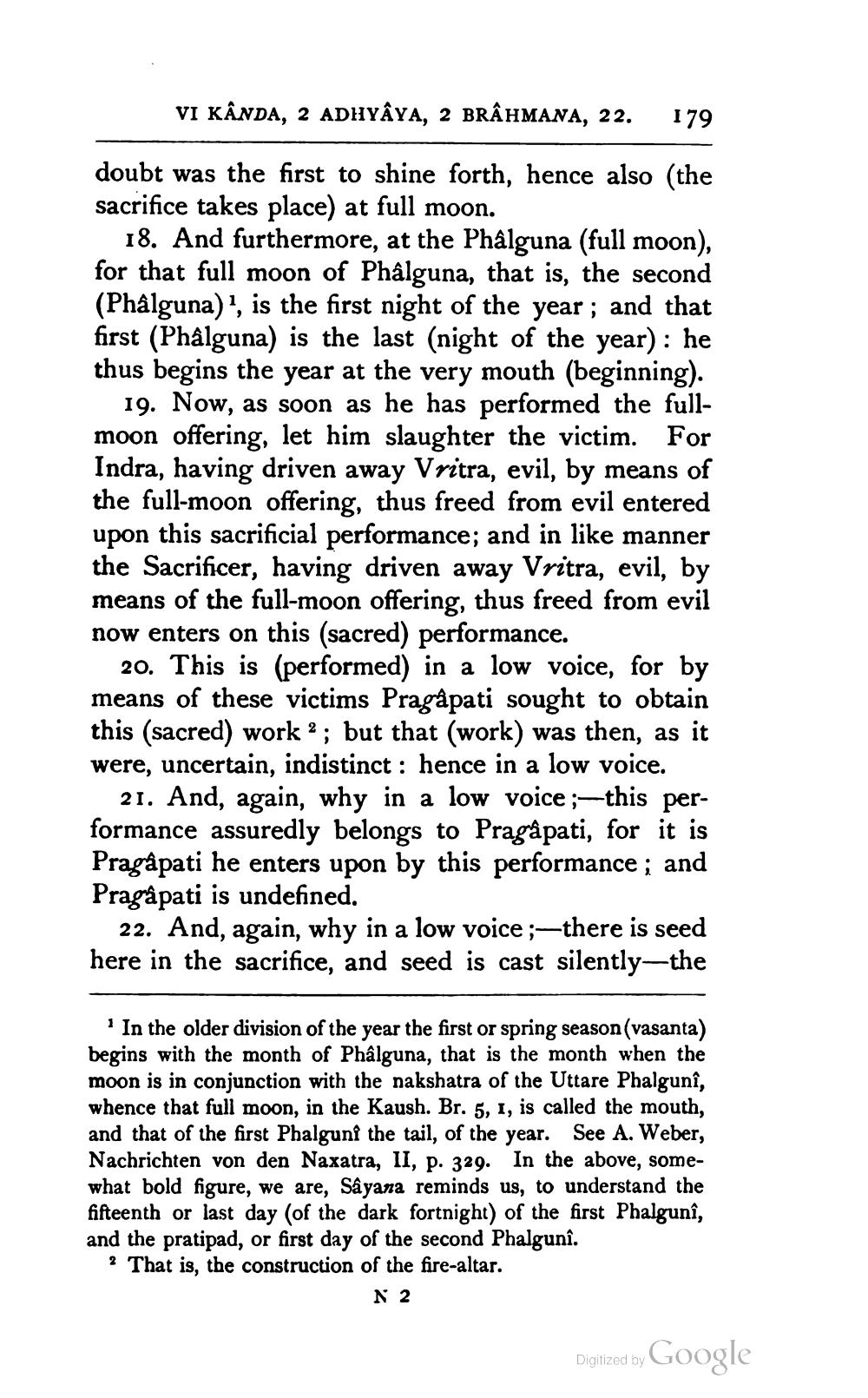________________
VI KANDA, 2 ADHYAYA, 2 BRÂHMANA, 22.
179
doubt was the first to shine forth, hence also (the sacrifice takes place) at full moon.
18. And furthermore, at the Phålguna (full moon), for that full moon of Phâlguna, that is, the second (Phâlguna) 1, is the first night of the year; and that first (Phålguna) is the last (night of the year): he thus begins the year at the very mouth (beginning).
19. Now, as soon as he has performed the fullmoon offering, let him slaughter the victim. For Indra, having driven away Vritra, evil, by means of the full-moon offering, thus freed from evil entered upon this sacrificial performance; and in like manner the Sacrificer, having driven away Vritra, evil, by means of the full-moon offering, thus freed from evil now enters on this sacred) performance.
20. This is (performed) in a low voice, for by means of these victims Pragàpati sought to obtain this (sacred) work ? ; but that (work) was then, as it were, uncertain, indistinct : hence in a low voice.
21. And, again, why in a low voice ;—this performance assuredly belongs to Pragapati, for it is Pragâpati he enters upon by this performance; and Pragâ pati is undefined.
22. And, again, why in a low voice;—there is seed here in the sacrifice, and seed is cast silently—the
'In the older division of the year the first or spring season (vasanta) begins with the month of Phâlguna, that is the month when the moon is in conjunction with the nakshatra of the Uttare Phalgunî, whence that full moon, in the Kaush. Br. 5, I, is called the mouth, and that of the first Phalguni the tail, of the year. See A. Weber, Nachrichten von den Naxatra, II, p. 329. In the above, somewhat bold figure, we are, Sayana reminds us, to understand the fifteenth or last day (of the dark fortnight) of the first Phalgunî, and the pratipad, or first day of the second Phalgunî. 2 That is, the construction of the fire-altar.
N 2
Digitized by Google




